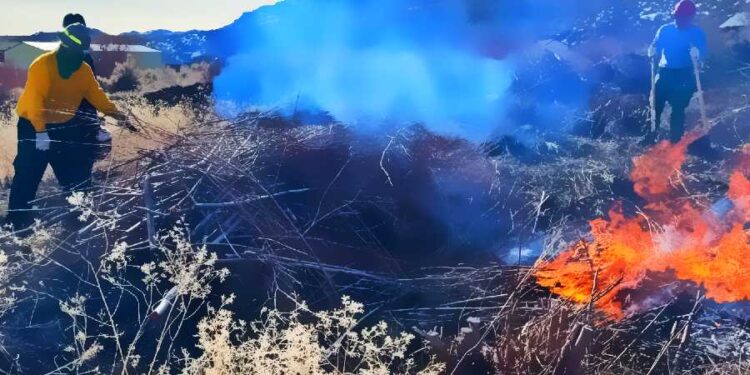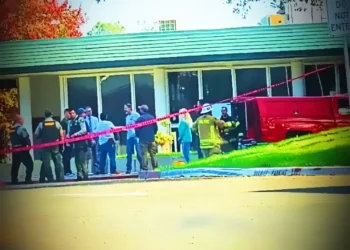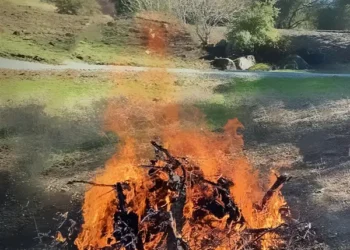El Dorado County (Jan 23, 2025) – In the face of escalating wildfires across the Western United States, the Washoe Tribe of Nevada and California is reintroducing traditional cultural burning practices to enhance forest and plant health. These intentional fires, once suppressed by federal policies, are now recognized for their ecological and cultural benefits.
In late September 2024, the Washoe Tribe hosted its inaugural Intentional Fire Training near South Lake Tahoe. This event, held from September 30 to October 4, was a collaborative effort with partners including the University of Nevada, Reno Extension, the USDA Forest Service Lake Tahoe Basin Management Unit, The Watershed Research and Training Center, and The Nature Conservancy. The training aimed to equip tribal members with essential fire management skills and certifications, emphasizing the integration of Indigenous knowledge with contemporary land stewardship techniques.
Cultural burns are typically conducted on a smaller scale, targeting specific areas to promote the growth of traditional medicinal plants and other resources vital to Indigenous cultures. For instance, burning willow patches encourages the growth of straighter willows, which are essential for the Washoe’s renowned basket-making traditions.
Historically, federal policies prioritized fire suppression, often disregarding Indigenous land management practices. This approach led to an accumulation of flammable materials in forests, increasing the risk of severe wildfires. Recognizing the shortcomings of total fire suppression, there is now a shift towards embracing traditional ecological knowledge. The Nature Conservancy, through initiatives like the Indigenous Peoples Burning Network, supports community-based efforts to reintroduce beneficial fire into ecosystems.
Brandon Cobb, a program manager with The Nature Conservancy and a member of the Cherokee Nation, highlighted the importance of these practices: “A lot of what we’re doing here is trying to return to that different style of fire that allows us to actually promote our ecosystems, promote our cultures.”
The recent training not only provided participants with hands-on experience in fire management but also fostered a deeper understanding of the cultural significance of these practices. As more tribes and agencies collaborate, there is hope that reintroducing cultural burning will lead to healthier forests and a reduction in catastrophic wildfires.
Community members are encouraged to share their thoughts on the reintroduction of cultural burning practices. How do you perceive the integration of traditional knowledge with modern land management? What role should local communities play in these initiatives? Your insights are valuable as we navigate the path towards sustainable and inclusive environmental stewardship.
The Washoe Tribe of Nevada and California traditionally inhabited a vast territory spanning parts of Nevada, California, and Oregon. Lake Tahoe, which they call DaɁaw (meaning “the lake”), is at the heart of their ancestral homeland. Here’s a breakdown of their lands in the Lake Tahoe region:
Traditional Territory:
- Lake Tahoe Basin: The Washoe people consider Lake Tahoe a sacred place. It was central to their cultural and spiritual practices, as well as their seasonal migration patterns.
- Carson Valley and Sierra Nevada: Their territory extended east into Nevada’s Carson Valley and westward across the Sierra Nevada into areas surrounding present-day Placerville and beyond.
- High Sierra Meadows and Lakes: The Washoe also utilized the high Sierra meadows and smaller lakes surrounding Lake Tahoe for hunting, gathering, and ceremonies.
Present-Day Lands:
The Washoe Tribe currently has landholdings that include:
- Dresslerville Community: Near Gardnerville, Nevada, this is the primary residential area for many tribal members.
- Woodfords Community: Located near Markleeville, California, this is another significant area for the tribe.
- Stewart Community: Near Carson City, Nevada, home to historical tribal lands and the Stewart Indian School.
- Washoe Meadows State Park: This park near South Lake Tahoe contains land significant to Washoe history and culture.
- Cave Rock (DeɁek Wadapush): On the eastern shore of Lake Tahoe, this site is sacred to the Washoe and has historical significance as a spiritual site.
The Washoe Tribe works actively to preserve their cultural heritage, manage traditional lands, and protect the Lake Tahoe Basin’s natural and spiritual integrity.










